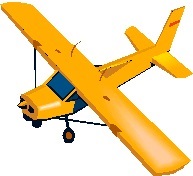GCDAMP- Over-Flights
| Overflights- LIDAR | |
 |
2020 Overflight (TWP Pg260-271)
“The proposed schedule for this data collection mission is in May of 2021, during the first year of the FY2021-23 Triennial Work Plan (TWP). ”
“GCMRC will implement a remote sensing overflight to collect digital, multispectral imagery and topography of the Colorado River ecosystem between Glen Canyon Dam and Lake Mead in May 2021. To maintain consistency with previously collected digital, orthorectified aerial imagery acquired in 2002, 2009, and 2013 (Davis, 2012; Durning and others, 2016), the mission will be conducted during the same time of year (beginning on Memorial Day weekend and lasting for potentially one week or longer depending on weather) and adhere to much of the same data collection parameters and significant logistical requirements as used in preceding missions. “
“Specifications for the data acquisition necessitate that releases of the dam be held at a steady discharge of 8,000 ft3/s for the duration of the overflight mission. As such, the proposed 2021 overflight would be within the LTEMP flow regime, and we would request from and work with the Bureau of Reclamation and Western Area Power Administration to maintain the steady 8,000 ft3/s discharge for the duration of the data collection period. This flow adjustment is required to maintain consistency with imagery data sets collected in previous years and maximizes subaerial terrain that is not inundated by the river in the imagery. This will allow for highly accurate image classification of landcover in May 2021, and for image matching and change detection analysis with previous overflight datasets (see for example: Sankey and others, 2015, 2018a, c; Bedford and others, 2018b; Kasprak and others, 2018). “
2013 Overflight Wrap Up
The total cost of conducting the overflight including the collection and processing of the data was $525k (source: June 26, 2013 Webex meeting minutes)
"The 2013 image collection was a success. Totally cloud-free imagery for the entire corridor was collected in 6 days. Certain lines required reflights due to turbulence which produces image smears. Turbulence was the only delaying factor, especially in flight block G, because it is perpendicular to the prevailing high winds."
- May (2013) overflights (cost WAPA $74,000 in replacement power)
Contributor: USGS Category: Sediment- Cultural Resources- Riperian Vegetation